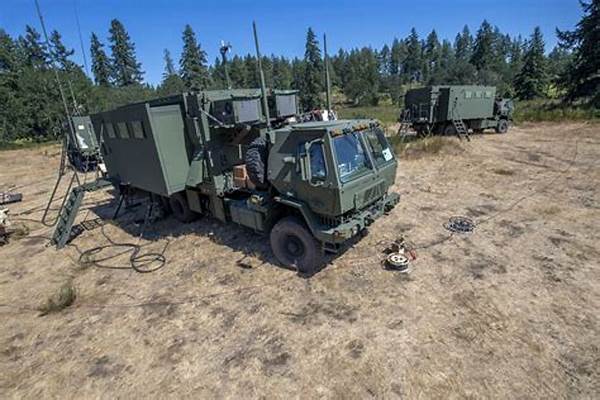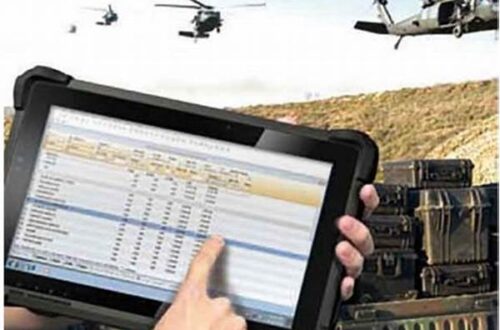The concept of an Integrated Joint Command Infrastructure has gained significant traction in recent years due to the increasing complexity of global military operations. This infrastructure facilitates seamless communication, coordination, and decision-making across various armed forces and defense agencies. By uniting disparate systems under a comprehensive framework, it ensures that the right information is available at the necessary time, enhancing the efficacy and efficiency of military operations. Such an integrated approach is vital in the modern era, where rapid technological advancements demand interoperability and adaptability. The integration of multiple command systems ensures that strategic goals are met promptly, reducing the risks associated with delayed actions.
Strategic Advantages of Integrated Joint Command Infrastructure
An Integrated Joint Command Infrastructure provides several strategic advantages imperative for contemporary military operations. Firstly, it enhances situational awareness by providing real-time data to decision-makers across all levels of command. This results in informed decision-making, which is crucial during critical operations. Secondly, it fosters interoperability among military units from different countries, promoting unified responses in multinational operations. Furthermore, the integrated nature of this infrastructure supports efficient resource allocation by optimizing supply chains and logistics. Finally, integrated joint command infrastructure enables improved cyber resilience by incorporating robust cybersecurity measures, critical in the face of modern warfare threats.
Components of Integrated Joint Command Infrastructure
1. Communication Networks: Integrated joint command infrastructure relies heavily on state-of-the-art communication networks, ensuring secure and fast data transmission.
2. Intelligence Systems: Gathering and interpreting intelligence is crucial, and this infrastructure ensures a collaborative approach to intelligence operations.
3. Decision Support Systems: These systems provide commanders with the tools needed for data analysis and operational planning.
4. Cybersecurity Protocols: Protecting information is core to the infrastructure, ensuring defenses against cyber threats.
5. Logistics and Supply Chains: Integrated systems support the efficient management of resources, crucial for sustained operations.
Enhancing Multinational Operations through Integrated Infrastructure
The Integrated Joint Command Infrastructure plays a pivotal role in enhancing multinational military operations. As global threats require collaborative efforts, the infrastructure supports seamless integration among various national defense forces. This is achieved by standardizing communication protocols and interoperability frameworks, facilitating unified actions in coalition warfare. As nations often have differing military technologies and doctrines, an integrated joint command infrastructure bridges these gaps, ensuring cohesive strategies. Moreover, it enables a rapid response to emerging threats, as nations can coordinate real-time actions and share strategic insights. Ultimately, this integration strengthens alliances, fortifies collective security measures, and upholds international peace.
Technological Innovations in Integrated Joint Command Infrastructure
1. Network-Centric Warfare: This approach emphasizes the importance of digital networks in supporting integrated joint command infrastructures, enhancing communication and operational effectiveness.
2. Advanced Data Analytics: Integrated systems utilize big data analytics, allowing for predictive insights and improved decision-making in various command scenarios.
3. Artificial Intelligence: AI technologies contribute to autonomous decision support, analyzing vast datasets within the integrated joint command infrastructure.
4. Cyber Defense Mechanisms: Developing advanced protocols to protect sensitive data within the infrastructure from cyber threats is imperative.
5. IoT in Defense: The Internet of Things integrates with military equipment, enhancing real-time situational awareness.
6. Secure Cloud Computing: Integrated infrastructures often rely on cloud solutions for scalable and secure data storage.
7. Interoperable Systems: Creating systems that can work across different technological platforms is essential for the integrated approach.
8. Blockchain Technology: Used for secure data transactions within the infrastructure.
9. Satellite Communications: Ensures global coverage and reliability of communication for joint commands.
10. Augmented Reality: Used in training and operational planning within the infrastructure.
Streamlining Command and Control with the Integrated Approach
An Integrated Joint Command Infrastructure is indispensable in streamlining command and control within military operations. By providing a cohesive framework, it enables centralized command functions that are crucial for swift decision-making. The infrastructure amalgamates disparate command chains, enhancing responsiveness and agility in operations. It supports centralized data collection, which facilitates better situational analysis and strategy formulation. Moreover, this integrated approach ensures that all units and assets are aligned with overarching strategic objectives, eliminating redundancies. In a rapidly evolving operational landscape, such infrastructure is essential for maintaining a competitive edge.
Future Prospects of Integrated Joint Command Infrastructure
Looking ahead, the Integrated Joint Command Infrastructure will continue to evolve, incorporating cutting-edge technologies and addressing emerging security challenges. The increasing reliance on cyber-warfare necessitates enhanced cyber defenses within this infrastructure. Artificial intelligence, machine learning, and quantum computing are anticipated to redefine operational capabilities, offering unprecedented predictive and analytical powers. As geopolitical landscapes shift, there will be a greater demand for integrated infrastructures that accommodate diverse military alliances. Additionally, advancements in space-based technologies will further extend the capabilities of integrated joint command infrastructures, ensuring comprehensive global coverage and real-time intelligence.
Conclusion
In conclusion, the Integrated Joint Command Infrastructure represents a monumental advancement for modern military operations, offering substantial strategic, operational, and technological benefits. It reinforces alliances by facilitating interoperability, ensuring cohesive actions in multinational endeavors. The infrastructure’s adoption of cutting-edge technologies signifies its critical role in addressing contemporary and future security challenges. As it continues to evolve, it will further solidify the capabilities of defense forces worldwide, providing them the tools necessary to navigate the complexities of modern warfare. Ultimately, integrated joint command infrastructure not only enhances military efficacy but also contributes to global stability and peace.





